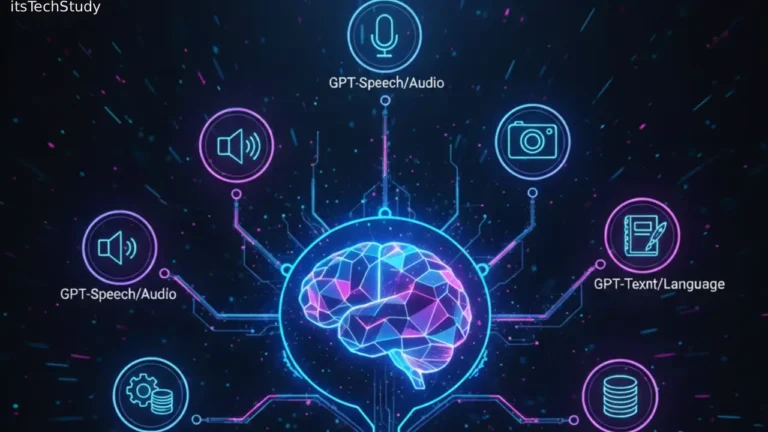Introduction: Why AI Workflows Matter More Than Ever
The last decade has reshaped the way we think about automation, productivity, and digital intelligence. From cloud-native applications to intelligent assistants embedded in every tool we use, the technology landscape is evolving at an overwhelming pace. But while organizations are adopting AI faster than ever, most still struggle with one major challenge: building reliable, scalable AI workflows that can automate real work – not just generate text.
This gap is where Claude, the advanced AI model from Anthropic, is making a huge difference.
Claude has become one of the most powerful tools for developers, creators, analysts, and businesses who want to automate tasks such as data analysis, content generation, coding assistance, knowledge management, and multi-step reasoning. Yet despite its capabilities, many users don’t know how to structure or systemize tasks into a workflow that operates efficiently and consistently.
This step-by-step tutorial bridges that gap.
Whether you’re a developer looking to streamline coding processes, a researcher trying to automate knowledge extraction, or a business owner implementing AI for daily operations, you’ll learn exactly how to build powerful AI workflows using Claude. This guide is designed to help beginners and advanced tech users alike turn complex tasks into repeatable, automated AI-powered systems.
What Is an AI Workflow? Understanding the Foundation
Before diving into the step-by-step tutorial, it’s important to understand what makes an AI workflow different from a simple model prompt.
What an AI Workflow Really Means
An AI workflow is a structured sequence of automated tasks where Claude performs one or more actions such as:
- Understanding input or context
- Making decisions
- Extracting information
- Analyzing data
- Performing reasoning or summarization
- Generating content or outputs
- Triggering other tools or actions
Instead of manually prompting Claude every time, an AI workflow ensures consistency, quality, and scalability.
Why Build Workflows Instead of Single Requests?
Key Reasons AI Workflows Are Essential
- Consistency: Removes human variability and repeatable errors.
- Speed: Automates complex processes that normally take hours.
- Scalability: Allows tasks to repeat with minimal manual effort.
- Integration: Connects Claude with other tools and APIs.
- Optimization: Improves accuracy through structured logic.
Step-by-Step Guide: How To Build Powerful AI Workflows Using Claude
This detailed tutorial walks you through designing, building, and refining an AI workflow with Claude. You can apply these steps to automation, content creation, coding tasks, or any process you want Claude to handle.
Step 1: Define the Goal of the Workflow
Before typing anything into Claude, you must be crystal clear about your end goal.
Ask yourself:
- What problem am I trying to solve?
- What input will Claude receive?
- What output do I expect?
- Who will use the final workflow?
- Should the workflow run once or repeatedly?
Example Workflow Goals
- Automating customer email responses
- Analyzing CSV or JSON data
- Creating structured reports
- Writing optimized blog content
- Summarizing long documents
- Generating code in multiple languages
This step sets the foundation for every action that follows.
Step 2: Break the Task Into Logical Stages
The biggest mistake beginners make is giving Claude one massive prompt. AI performs better with structure.
Breakdown Example for a Research Summary Workflow:
- Upload the source document
- Extract key topics
- Identify trends or themes
- Generate summaries
- Produce recommendations
Each part becomes a step in your workflow.
Step 3: Choose the Tools and Integrations
Claude can operate alone or as part of a bigger automated system.
Common Tools Used With Claude:
- Zapier – for no-code automation
- Make.com – advanced workflow builders
- Replit / Python Scripts – for developers
- Notion / Google Docs – for content workflows
- API Integrations – for enterprise automation
Choosing the Right Fit
- Non-coders: Use Zapier or Make
- Intermediate tech users: Use Notion, Sheets, or small scripts
- Developers: Use Claude API directly
Step 4: Write a High-Quality Prompt Structure
This is where your workflow becomes intelligent.
Components of a Good Workflow Prompt
- Clear instructions
- Role assignment (e.g., “act as a data analyst”)
- Constraints (length, tone, format)
- Examples
- Required outputs
- Error handling steps
Good workflows are specific, predictable, and repeatable.
Step 5: Build the Workflow (Practical Example)
Example AI Workflow: Automated Blog Writer Using Claude
Step-by-Step Structure
1. Input: Title or topic
2. Claude Action 1: Generate outline
3. Claude Action 2: Write section drafts
4. Claude Action 3: Add SEO keywords
5. Claude Action 4: Produce final polished article
6. Output: Completed article saved in Notion or Docs
This is just one example — you can replace the actions with any task depending on your workflow.
Step 6: Test the Workflow Thoroughly
Testing reveals:
- Ambiguities
- Missing steps
- Formatting issues
- Inconsistent results
Iterate until results are reliable.
Step 7: Add Automation and Scaling
Once the workflow works manually, integrate with:
- APIs
- Scheduling tools
- Batch processing
- Automated triggers
This transforms Claude from a helpful tool into a production-level automation system.
Comparison Table: Claude vs Other AI Workflow Tools
| Feature | Claude | ChatGPT | Gemini | Llama Models |
|---|---|---|---|---|
| Best For | Reasoning & analysis | Versatile tasks | Search + AI | Open-source customization |
| Workflow Strength | High | High | Medium | Depends on integration |
| Safety Features | Very strong | Strong | Strong | Varies |
| Creativity | High | High | Medium | Medium |
| API Flexibility | Excellent | Excellent | Moderate | High |
| Cost Efficiency | Good | Moderate | Good | High (self-hosted) |
Pros and Cons of Using Claude for AI Workflows
Pros
- Excellent reasoning abilities
- Human-like structured responses
- Highly reliable for complex multi-step tasks
- Strong safety model
- Easy integration with APIs and tools
- Great for enterprise-scale workflows
Cons
- Certain tools may not integrate directly
- Higher learning curve for workflow design
- Requires clear instructions for best output
Best Practices for Building Effective Claude Workflows
1. Use Modular Prompts
Break long tasks into smaller logical stages.
2. Avoid Ambiguous Language
Be precise with instructions to improve consistency.
3. Always Define Output Format
Use bullet points, JSON, tables, or structured templates.
4. Include Error-Handling Rules
Specify what Claude should do if input is unclear.
5. Give Examples
Example-driven prompts reduce confusion.
6. Test With Real Data
Simulate real-world scenarios for accurate outputs.
Real-World Use Cases of Claude Workflows
1. Customer Support Automation
Automates classification, routing, and response generation.
2. Data Extraction and Analysis
Extracts insights from PDFs, spreadsheets, logs, and more.
3. Content Production Pipelines
Writes blog posts, product descriptions, reports, and scripts.
4. Developer Workflows
Code generation, bug fixing, documentation creation.
5. Knowledge Management
Generates summaries, organizes notes, builds knowledge bases.
Conclusion: Claude Makes AI Workflows Practical and Scalable
Building powerful AI workflows with Claude is no longer a complex technical challenge. With the right structure, clear goals, and step-by-step logic, you can transform tedious manual tasks into automated, intelligent systems that save hours of work every week.
Whether you’re developing applications, managing content pipelines, analyzing data, or automating business processes, Claude gives you the reliability, reasoning strength, and flexibility you need to build high-performance AI workflows.
The future of work belongs to those who can systemize and automate intelligently – and Claude provides the perfect foundation to get there.
FAQ – Frequently Asked Questions
Q1: Is Claude good for multi-step workflows?
Ans: Yes. Claude excels at multi-step tasks due to its strong reasoning ability and consistent structured output.
Q2: Do I need coding skills to build workflows?
Ans: Not necessarily. Tools like Zapier, Notion, and Make.com allow no-code users to build powerful workflows using Claude.
Q3: Can Claude process large documents for workflows?
Ans: Yes. Claude is known for handling long documents with high accuracy, making it ideal for research, analysis, and summarization workflows.
Q4: How do I ensure my workflow stays consistent?
Ans: Use templates, structured prompts, example-based instructions, and output formatting.
Q5: Can Claude integrate with APIs and external software?
Ans: Yes. Developers can connect Claude with any system via API to automate tasks, trigger actions, or process data.
Q6: Are Claude workflows suitable for businesses?
Ans: Absolutely. Companies use Claude for automation, analytics, reporting, and customer experience improvement.












No Comments Yet
Be the first to share your thoughts.
Leave a Comment